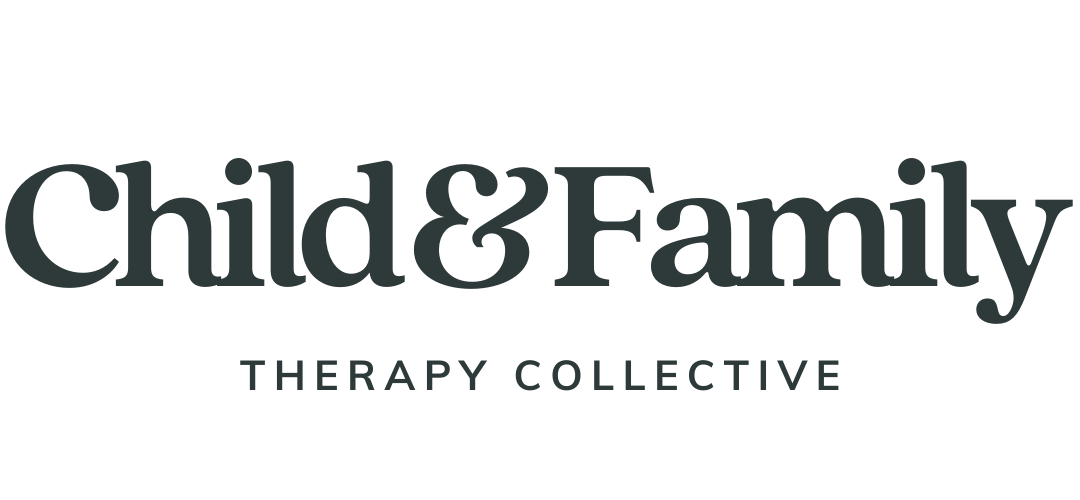The Role of Speech-Language Pathology in Multi-Disciplinary Care
At Child & Family Therapy Collective, we believe in treating the whole child through collaborative, specialized care.
Understanding Speech-Language Pathology
It is difficult to summarize the speech-language pathology profession in a few words. At Child & Family Therapy Collective, a speech-language pathologist's role is to engage in multi-disciplinary care to support the team in understanding how a child's speech, language, and social communication struggles could impact their ability to navigate their emotional, social, and academic worlds.
An SLP is responsible for assessing, diagnosing, and treating various disorders related to a child's:
Sound production
Understanding and use of language
Social understanding
Additional areas including fluency/stuttering, swallowing, voice, and cognitive-communication
Decoding the "Therapy Language"
When parents enter the "therapy world" with their children, it often feels as though they are expected to comprehend an entirely new language. Below are some key definitions used in speech-language pathology to assist in understanding this new vocabulary:
Key Terms in Speech-Language Pathology
Receptive Language: The ability to understand and comprehend spoken or written language—the "input" side of communication where someone listens and interprets what is being said to them, including following instructions and understanding words and sentences.
Expressive Language: The ability to communicate one's thoughts and feelings through spoken words, gestures, writing, or other symbols—the "output" of language used to express oneself and convey meaning to others. This includes skills like vocabulary use, sentence structure, and appropriate grammar usage.
Social Pragmatic Communication: The use of language in social situations, including the ability to adapt communication to different contexts. It encompasses how an individual uses verbal and nonverbal communication in social situations to meet their social needs with various communication partners. It involves one's ability to change communication styles to match the situation or the listener's needs.
Articulation: How one pronounces specific sounds and forms words. It often refers to how easily one is understood.
The Multi-Disciplinary Approach
As part of the CFTC multi-disciplinary approach, a child may be recommended for a speech-language evaluation. This comprehensive assessment of a child's communication skills helps identify:
Areas of development that are strengths for the child
Skills that are less developed that could lead to struggles in meeting communication needs
Potential speech or language disorders
Whether direct therapy is warranted to support the child's development
Behavioral improvements to support access to the world
The Connection Between Communication and Mental Health
Often, a child's speech-language challenges negatively impact their ability to build relationships within their families and school environments. Research and clinical experience suggest that anxiety and language disorders frequently co-exist and negatively impact the child's response to therapeutic intervention. Additionally, children can become frustrated if language, receptive and or expressive, is difficult to communicate with adults and children.
A multi-disciplinary treatment team like CFTC—where all treating professionals understand anxiety and its impact on a child's ability to engage in their world and are trained in evidence-based practices—creates a therapeutic environment that:
Helps families understand their child's speech-language needs
Addresses the therapeutic needs of the whole child to support access to childhood
Addressing Social Communication Needs
One way our team assists families in helping give their children their childhood back is by addressing the child's social (pragmatic) communication needs. The SLP and treatment team guide parents in understanding and implementing social-behavioral strategies to support their child's ability to engage in their social worlds and strengthen relationships with others.
Special Focus: Selective Mutism
Research indicates that simply lowering anxiety in children with Selective Mutism is not enough to enable the child to begin verbally engaging in their social worlds. The combination of anxiety treatment with support in learning to progress to verbal communication is optimal in helping a child find their brave voice and overcome SM.
The SLP's role includes:
Assisting the child, treatment team, and parents in implementing steps to build the child's confidence in using their words
Helping children meet their social needs with various communication partners
Collaborating with parents and academic teams to develop treatment activities
Facilitating the child's engagement in speaking situations in their community and school environment
At Child & Family Therapy Collective, we believe in the power of collaborative care to address the whole child's needs, giving them the tools to thrive in all aspects of their lives.
Click here to learn about our Speech and Language Pathologist.
